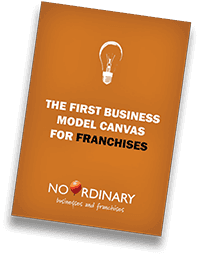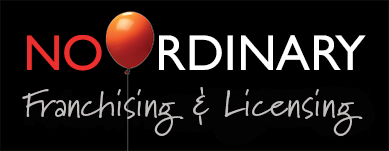Nitin Nohria is a smart guy. Before he became the new dean at Harvard Business School, he and two associates studied 160 companies to look for the keys to success common to all businesses, including franchise businesses. It turns out that management tools and techniques don’t make a blind bit of difference. What actually does make a difference took them – and us – by surprise. And what’s even more surprising is that it all comes down to ONE thing.
What probably won’t come as a surprise to you is that Nohria and his co-researchers found that the difference between the success and failure of companies had nothing to do with fancy computer systems, trendy management styles or, sadly for us, brilliant business consultants.
But what you might not have expected is that the difference had only a little to do with innovation, technology or new products.
What does matter, it turns out, is having a strong handle on the bare basics of business. Without exception, companies which outperformed their industry peers excelled at what the researchers called the four primary management practices: strategy, execution, culture, and structure. Nothing new there.
However, these companies enhanced their great skill in the primary areas with a mastery of any two out of these four secondary management practices: talent, innovation, leadership, and mergers and partnerships.
Not surprisingly, and a little bit unoriginally, Nohria and his team dubbed these findings as the ‘4 + 2 Formula for Business Success’.
But just in case you were thinking that the 4 + 2 Formula is just ‘Management 101’ stuff, straightforward and even a little mundane, Nohria points out that the real challenge is keeping a ‘laser-like focus’ on even just one of the 4 + 2 areas – such as strategy – over time. Over ten solid years, year in and year out, the challenge is gruelling, he said. A single misstep on any of the six areas can be fatal. No wonder then that only forty of the 160 companies in the study emerged as winners.
The rewards for the winners are, however, substantial. The report showed that over the ten-year period, investors in the winning companies saw their money multiply nearly ten times, with total returns to shareholders of 945%. By contrast, the average loser produced only 62% in total returns to shareholders over the same period.
A case in point was how one of the winners in the study, US-based retailer Dollar General, fared against its competitor Kmart during our research period.
In the beginning, both companies were in roughly the same shape. Both companies had the same focus: Providing products of reasonable quality to low- and fixed-income markets at low prices. But Kmart floundered, its market share plummeting from 30% to just 17% over the ten years. The company got distracted by forays into more upmarket goods and then into specialty retailing, alienating itself even more from its core customers. Meanwhile, Dollar General never wavered from its focus on the 4 + 2 Formula. It grew steadily, showing consistently healthy profits. A salutary lesson for The Warehouse here in New Zealand?
How did the winning companies like Dollar General maintain that ‘laser-like focus’ year after year? How did they avoid straying off the path of success as Kmart and many other well-known businesses so famously have?
The ONE common element that Nohria and his research team found is that the winners all, without exception, had a clear, specific plan setting out exactly how they intended to follow the 4 + 2 Formula. Whereas the losers either did not have a plan or had one that didn’t adequately cover the 4 + 2 Formula or that they deviated from.
So the ONE thing referred to in the title of this article is – the ONE thing that the research demonstrates makes all the difference between success and failure in business – is that obvious but often overlooked key to success … a working business plan.
Does your business have a working business plan? If yours isn't working, or you don't have a written plan, we can put you on the right track to success with services such as Strategic Planning and Business Model Assessment and Generation. Contact us for a free Initial Consultation.
My name is Robin La Pere of No Ordinary Consultants and I have worked in the franchising industry for more than 20 years.
I have been a franchise manager, CEO and franchisor, and am now working as a franchise consultant with a number of franchises to help them grow their networks or expanding internationally.
If you'd like professional assistance with any aspect of your franchise, including the primary or secondary management practices described in this article, contact me
for a free Initial Consultation.
Relevant Articles
A major strength of franchising is that it’s based on tried and true business models. Trouble is, in this fast-changing business environment, what’s tried and true one year may be tired or irrelevant the next.
Not surprisingly, one out of three franchisors is concerned about the viability of their business model.
The 'Business Model Canvas' has emerged as a powerful tool for developing and updating business models. Recognising that franchise businesses differ in several ways from other business types, I have come up with a new version of the Business Model Canvas designed specifically for franchises.
Send me your email and I'll email you my e-book The Business Model Canvas for Franchisors:




